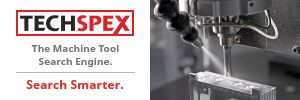
Automated control will first appear in highway driving where speeds are relatively constant, threats quantifiable, and scenarios less complex. Nevertheless, the preference is for the driver to stay focused on the driving task, and properly positioned behind the wheel.

Automatic Emergency Braking (AEB) will be the first automated system offered by automakers. In the near future, all new cars will require AEB in order to get a Five Star safety rating, and will build upon this system.

Though pedestrian recognition is part of Automatic Emergency Braking, autonomous driving in urban settings is extremely complex. The addition of vehicle-to-vehicle (V2V) and vehicle-to-infrastructure (V2I) communications will reduce the onboard computing load and provide more and better data, but that will take lots of time and money to implement.
Related Suppliers
ZF TRW Active and Passive Safety Technology Division
Are autonomous vehicles the Holy Grail of automotive safety? Both the media and Wall Street have focused on the autonomous future, suggesting driverless cars are not only just around the corner, but will dramatically reduce, if not eliminate, vehicle crashes and force wide-spread global adoption of this technology. They claim injury and death rates will plummet, as will insurance costs, and automakers will be able to make their vehicles less “battle hardened†for the simple reason that they are unlikely to crash during their lifetime. Further, you will be able to choose between autonomous and non-autonomous driving on the fly, and turn the family car from a transportation device to a rolling office or conversation pit. “At times I think some of the media coverage has gotten well ahead of reality,†says Brian Loh, TRW’s vice president, Active Safety and Automated Driving. “We are way far away from where you could start taking passive safety out of a vehicle.â€
As with any safety system, autono-mous driving is built from building blocks laid down over decades, but the advent of greater computing power, more robust software, and the introduction of intermediary technologies have created safety modules with greater bandwidth. These are morphing into Advanced Driver Assistance Systems (ADAS) that move from providing warnings to the driver (Level 0), to automating specific functions (Level 1), to the combined automation of at least two primary control functions (Level 2), limited self-driving (Level 3) and full self-driving (Level 4).
“The most common sensors will be the ones needed to get a Five Star safety rating.†says Loh. “You will have a camera, a radar or both, to which you can add software that brings some level of automated functionality.†Emergency braking assist will be one of the first steps on this ladder. Moving beyond this level of functionality, however, will require systems that are much more ambitious and robust.
“Let’s say you’re in a situation where it’s too late to brake,†says Loh, “and you need to make an evasive maneuver.†In this situation, the safety system would introduce torque to create a “torque tunnel†that applies the right amount of steering input to steer around the obstacle. This requires pre-programming those values into the onboard computer, reading the available grip at the wheels, and applying enough input to steer around the object without spinning. “That’s a lot more complicated than automatic emergency braking,†says Loh. “You need free-space detection, must understand where you are in the two-dimensional grid, and have to take into account things like the closing speed of traffic. This is especially important on the autobahn, and makes free-space detection extremely challenging. Most importantly, you have to be certain you’re not going to cause an accident by trying to avoid one.â€
Though automatic emergency braking could follow electronic stability control and move from a safety option to a regulatory mandate, it’s more than likely that it will take a few product cycles before any automated safety technology moves from an expensive add-on to a main-stream choice. “I think you’ll find that most automakers at least will have the option for these systems in place,†says Loh, “so they can offer it as a way to increase safety and enhance revenue, without pricing the customer who doesn’t want it or can’t afford it out of the market.â€
Unfortunately, not every accident is avoidable. In this instance, safety systems may be called upon to determine crash inevitability, and set the vehicle up to crash in the safest manner possible. “That requires more robust sensors with a wider field of view,†says Loh. “The farther out you can see, the more information you can gather, and the more likely it is that you can predict if you are on a collision trajectory. That buys you a lot of time, but what do you do with that time?†Today there are vehicles that pre-condition themselves for an accident by using the restraints to pull passengers into position, and pre-load the brakes to reduce the stopping distance. However, by looking farther out, it may be possible to line the vehicle up so the forces are fed into the structure along the most efficient path. “There are some very interesting opportunities to buy yourself some more time, and put the vehicle in the best possible state for a crash,†says Loh, “but they are far from ready to be put into production.â€
Of course, it’s not always necessary for the long-range sensor to be onboard as vehicle-to-vehicle (V2V) and vehicle-to-infrastructure (V2I) systems possess capabilities other sensors can’t. “They have the ability to let your vehicle see around objects or around buildings,†says Loh, “and there is very vital informa-tion that will come from these off-car sensors.†However, it will take time for V2V systems to reach critical mass, and the cost of V2I sensors and integration is quite high. So while Loh believes “they are part of the solution,†it is debatable as to when they will have a meaningful impact on autonomous safety.
Lurking in the corner, however, is a topic that, until recently, had little support within the OEMs: cyber security. “There are a lot of different security modes, especially when you have communications protocols like V2V and V2I that are in the cloud,†says Loh. “At a minimum,†he states, “you have to be sure that you can authenticate and trust the data you’re getting, as well as make certain that no one is able to access the vehicle’s CAN bus or anything else through the onboard sensors.†Related to this threat is what happens should components fail. “The first goal,†according to Loh, “is to be ‘fail operational’ for those occasions when a chip, sensor or other item goes down. That especially applies to the steering and braking actuators.†In other scenarios, it won’t be possible to be completely fail operational, but it still will be necessary to put the vehicle in a safe state. “You need to have enough redundancies and safeguards built in for the vehicle to operate long enough that it can pull over safely after taking control. And,†says Loh, “with all of the health monitoring that is being talked about for future vehicles, I can see a situation in which the vehicle would take control if the driver was incapacitated, pull safely to the side of the road, and call out for help.â€
One thing he doesn’t expect is for the car to become a lounge or office on wheels where passengers face each other or otherwise are out of position. “In 10 to 15 years, if you had a vehicle so automated that it allowed the driver to take his focus off of driving, there would be a higher chance that he would be out of position in a crash. Because the seatbelt and airbags are designed to keep the passengers safe when they are in a specific position,†cautions Loh, “it is going to take a different type of seatbelt, airbag and more to meet these requirements, which is going to require innovationÂ
to meet these new demands.â€
Until then, you can expect automated safety systems to proliferate based on the level of complexity required to implement them safely. “Most highways,†says Loh, “are a relatively low complexity environment with a range of speeds. There shouldn’t be too many surprises. Under those conditions, we would allow the vehicle to be in control.†However, in cities, parking lots, traffic jams in an urban setting, etc., these functions will not have complete control at first. Not only will the driver be in the loop, he will be in control with the safety systems acting to warn or, in extreme circumstances, act. Not everyone likes this idea. “There are some people who believe that the industry should skip Level 3, where self-driving is limited and control can be put back in the driver’s hands, to Level 4—full automation—because the intermediate stage is just too risky.†It is by no means the consensus view of the industry at this point, and it doesn’t take into account another potential concern.
“Think about how difficult it has been for OEMs to teach people about the features on their vehicle infotainment systems,†says Loh. “That’s a huge challenge, but at least it’s something you can demonstrate while sitting in a dealership parking lot.†In that case, maybe the next big safety innovation will be driving simulators. The Nintendo generation will love it.








